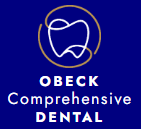To all of those who read this newsletter, thank you. I hope you find this monthly newsletter educational and interesting; perhaps it may even answer some questions about oral health that you may have been pondering. If you have any dental questions or topics you would like me to write about, please let me know! This month I will be presenting a fact sheet on teeth whitening and it will be in a bullet point format.
- The active ingredients that cause teeth to whiten are carbamide peroxide and hydrogen peroxide (which is a byproduct of carbamide peroxide).
- Peroxides whiten teeth through a chemical reaction that oxides the organic component of teeth.
- Whitening gel does not break down tooth structure.
- Whitening often makes teeth sensitive. Although the exact mechanism causing this sensitivity is unknown, it is typically temporary.
- Composite tooth-colored fillings, porcelain crowns/veneers, and cosmetic bonding cannot be whitened. If you are considering cosmetic dentistry to change the shape or appearance of some of your teeth, you should whiten the other teeth to your desired shade before having the cosmetic work done.
- “Whitening toothpastes” and “charcoal toothpastes” are typically very abrasive because they are designed to abrade away extrinsic staining on teeth. Often, these abrasive toothpastes can wear away enamel, especially when used with a hard bristled toothbrush and a vigorous scrubbing technique.
- Whitening toothpastes do not chemically whiten teeth unless they contain a peroxide. If they do contain a peroxide, it is at a low dosage and does not typically yield a significant whitening effect.
- Custom fit whitening trays are considered the “gold standard” for whitening teeth because they expose the largest surface area of teeth to the highest concentration of hydrogen peroxide for the longest amount of time.
- Putting Sensodyne or stannous fluoride toothpaste in your whitening trays once you are done bleaching can help mitigate sensitivity.
- If you are going to use whitening trays, make sure you brush your teeth and floss before you put them on to remove any plaque buildup.
- Make sure to wipe whitening gel off your gums when bleaching because it can irritate and inflame them.
- Whitening strips are a viable option to whiten teeth but yield the best results on teeth that are uniform and straight.
- Whitening trays and strips should be worn for different lengths of time depending on the strength of the gel. If 15% peroxide gel is used, patients can sleep with their whitening trays in overnight. If 35% peroxide gel is used, patients should only use them for 30 minutes at a time.
- The greatest whitening result is seen when patients stick to a daily regimen for a couple of weeks as opposed to sporadic one-time uses.
Thank you so much for reading! If you have any dental questions or concerns you can always reach out to me or Dr. Krist!
Sincerely,
John Obeck, DDS
